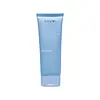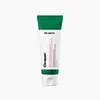What's inside
What's inside
 Key Ingredients
Key Ingredients

 Benefits
Benefits

 Concerns
Concerns

 Ingredients Side-by-side
Ingredients Side-by-side

Water
Skin ConditioningGlycerin
HumectantCoco-Betaine
CleansingBetaine
HumectantXanthan Gum
EmulsifyingSodium Chloride
MaskingCoco-Glucoside
CleansingCaprylyl Glycol
EmollientGlyceryl Caprylate
EmollientDecyl Glucoside
CleansingButylene Glycol
HumectantSodium Cocoyl Isethionate
CleansingDisodium EDTA
Panthenol
Skin Conditioning1,2-Hexanediol
Skin ConditioningAnthemis Nobilis Flower Extract
MaskingCitric Acid
BufferingQuillaja Saponaria Bark Extract
CleansingAllantoin
Skin ConditioningCaffeine
Skin ConditioningHelianthus Annuus Seed Oil
EmollientCamellia Sinensis Leaf Extract
AntimicrobialSaccharomyces/Xylinum/Black Tea Ferment
Skin ConditioningAgrimonia Eupatoria Extract
AstringentPortulaca Oleracea Extract
Skin ConditioningMelaleuca Alternifolia Leaf Extract
PerfumingPhenoxyethanol
PreservativeHydroxyethylcellulose
Emulsion StabilisingPotassium Sorbate
PreservativeWater, Glycerin, Coco-Betaine, Betaine, Xanthan Gum, Sodium Chloride, Coco-Glucoside, Caprylyl Glycol, Glyceryl Caprylate, Decyl Glucoside, Butylene Glycol, Sodium Cocoyl Isethionate, Disodium EDTA, Panthenol, 1,2-Hexanediol, Anthemis Nobilis Flower Extract, Citric Acid, Quillaja Saponaria Bark Extract, Allantoin, Caffeine, Helianthus Annuus Seed Oil, Camellia Sinensis Leaf Extract, Saccharomyces/Xylinum/Black Tea Ferment, Agrimonia Eupatoria Extract, Portulaca Oleracea Extract, Melaleuca Alternifolia Leaf Extract, Phenoxyethanol, Hydroxyethylcellulose, Potassium Sorbate
Water
Skin ConditioningGlycerin
HumectantSodium Cocoyl Isethionate
CleansingGlyceryl Stearate
EmollientStearyl Alcohol
EmollientCoco-Betaine
CleansingLauramidopropyl Betaine
CleansingSodium Methyl Cocoyl Taurate
CleansingSodium Chloride
MaskingMelia Azadirachta Leaf Extract
Skin ConditioningTheobroma Cacao Seed Extract
AntioxidantMelia Azadirachta Flower Extract
Skin ConditioningEryngium Maritimum Callus Culture Filtrate
Skin ConditioningQuillaja Saponaria Bark Extract
CleansingHouttuynia Cordata Extract
Skin ConditioningIlex Aquifolium Leaf Extract
Skin ConditioningAchillea Millefolium Oil
CleansingGlycine Soja Peptide
Skin ConditioningStreptococcus Thermophilus Ferment
HumectantAspergillus Ferment
Skin ConditioningTriticum Aestivum Seed Extract
PerfumingHedera Helix Extract
AntimicrobialMoringa Oleifera Seed Extract
Skin ConditioningCentella Asiatica Extract
CleansingHydroxypropyl Starch Phosphate
Coco-Glucoside
CleansingCaprylyl Glycol
EmollientCitric Acid
BufferingMaltodextrin
Absorbent1,2-Hexanediol
Skin ConditioningDextrin
AbsorbentButylene Glycol
HumectantGluconolactone
Skin ConditioningPanthenol
Skin ConditioningEthylhexylglycerin
Skin ConditioningLipase
Skin ConditioningProtease
ExfoliatingDipropylene Glycol
HumectantCalcium Chloride
AstringentHydrogenated Lecithin
EmulsifyingMadecassoside
AntioxidantMagnesium Sulfate
Asiatic Acid
Skin ConditioningAsiaticoside
AntioxidantMadecassic Acid
Skin ConditioningTocopherol
AntioxidantDisodium EDTA
Water, Glycerin, Sodium Cocoyl Isethionate, Glyceryl Stearate, Stearyl Alcohol, Coco-Betaine, Lauramidopropyl Betaine, Sodium Methyl Cocoyl Taurate, Sodium Chloride, Melia Azadirachta Leaf Extract, Theobroma Cacao Seed Extract, Melia Azadirachta Flower Extract, Eryngium Maritimum Callus Culture Filtrate, Quillaja Saponaria Bark Extract, Houttuynia Cordata Extract, Ilex Aquifolium Leaf Extract, Achillea Millefolium Oil, Glycine Soja Peptide, Streptococcus Thermophilus Ferment, Aspergillus Ferment, Triticum Aestivum Seed Extract, Hedera Helix Extract, Moringa Oleifera Seed Extract, Centella Asiatica Extract, Hydroxypropyl Starch Phosphate, Coco-Glucoside, Caprylyl Glycol, Citric Acid, Maltodextrin, 1,2-Hexanediol, Dextrin, Butylene Glycol, Gluconolactone, Panthenol, Ethylhexylglycerin, Lipase, Protease, Dipropylene Glycol, Calcium Chloride, Hydrogenated Lecithin, Madecassoside, Magnesium Sulfate, Asiatic Acid, Asiaticoside, Madecassic Acid, Tocopherol, Disodium EDTA
Ingredients Explained
These ingredients are found in both products.
Ingredients higher up in an ingredient list are typically present in a larger amount.
1,2-Hexanediol is a synthetic liquid and another multi-functional powerhouse.
It is a:
- Humectant, drawing moisture into the skin
- Emollient, helping to soften skin
- Solvent, dispersing and stabilizing formulas
- Preservative booster, enhancing the antimicrobial activity of other preservatives
Butylene Glycol (or BG) is used within cosmetic products for a few different reasons:
Overall, Butylene Glycol is a safe and well-rounded ingredient that works well with other ingredients.
Though this ingredient works well with most skin types, some people with sensitive skin may experience a reaction such as allergic rashes, closed comedones, or itchiness.
Learn more about Butylene GlycolCaprylyl Glycol is a humectant and emollient, meaning it attracts and preserves moisture.
It is a common ingredient in many products, especially those designed to hydrate skin. The primary benefits are retaining moisture, skin softening, and promoting a healthy skin barrier.
Though Caprylyl Glycol is an alcohol derived from fatty acids, it is not the kind that can dry out skin.
This ingredient is also used as a preservative to extend the life of products. It has slight antimicrobial properties.
Learn more about Caprylyl GlycolCitric Acid is an alpha hydroxy acid (AHA) naturally found in citrus fruits like oranges, lemons, and limes.
Like other AHAs, citric acid can exfoliate skin by breaking down the bonds that hold dead skin cells together. This helps reveal smoother and brighter skin underneath.
However, this exfoliating effect only happens at high concentrations (20%) which can be hard to find in cosmetic products.
Due to this, citric acid is usually included in small amounts as a pH adjuster. This helps keep products slightly more acidic and compatible with skin's natural pH.
In skincare formulas, citric acid can:
While it can provide some skin benefits, research shows lactic acid and glycolic acid are generally more effective and less irritating exfoliants.
Most citric acid used in skincare today is made by fermenting sugars (usually from molasses). This synthetic version is identical to the natural citrus form but easier to stabilize and use in formulations.
Read more about some other popular AHA's here:
Learn more about Citric AcidCoco-Betaine is the natural version of Cocamidopropyl Betaine. It is often derived from coconuts.
Coco-Betaine is a surfactant, meaning it helps remove dirt and oil from the skin.
Coco-Glucoside is a surfactant, or a cleansing ingredient. It is made from glucose and coconut oil.
Surfactants help gather dirt, oil, and other pollutants from your skin to be rinsed away.
This ingredient is considered gentle and non-comedogenic. However, it may still be irritating for some.
Learn more about Coco-GlucosideDisodium EDTA plays a role in making products more stable by aiding other preservatives.
It is a chelating agent, meaning it neutralizes metal ions that may be found in a product.
Disodium EDTA is a salt of edetic acid and is found to be safe in cosmetic ingredients.
Learn more about Disodium EDTAGlycerin is already naturally found in your skin. It helps moisturize and protect your skin.
A study from 2016 found glycerin to be more effective as a humectant than AHAs and hyaluronic acid.
As a humectant, it helps the skin stay hydrated by pulling moisture to your skin. The low molecular weight of glycerin allows it to pull moisture into the deeper layers of your skin.
Hydrated skin improves your skin barrier; Your skin barrier helps protect against irritants and bacteria.
Glycerin has also been found to have antimicrobial and antiviral properties. Due to these properties, glycerin is often used in wound and burn treatments.
In cosmetics, glycerin is usually derived from plants such as soybean or palm. However, it can also be sourced from animals, such as tallow or animal fat.
This ingredient is organic, colorless, odorless, and non-toxic.
Glycerin is the name for this ingredient in American English. British English uses Glycerol/Glycerine.
Learn more about GlycerinPanthenol is a common ingredient that helps hydrate and soothe the skin. It is found naturally in our skin and hair.
There are two forms of panthenol: D and L.
D-panthenol is also known as dexpanthenol. Most cosmetics use dexpanthenol or a mixture of D and L-panthenol.
Panthenol is famous due to its ability to go deeper into the skin's layers. Using this ingredient has numerous pros (and no cons):
Like hyaluronic acid, panthenol is a humectant. Humectants are able to bind and hold large amounts of water to keep skin hydrated.
This ingredient works well for wound healing. It works by increasing tissue in the wound and helps close open wounds.
Once oxidized, panthenol converts to pantothenic acid. Panthothenic acid is found in all living cells.
This ingredient is also referred to as pro-vitamin B5.
Learn more about PanthenolWe don't have a description for Quillaja Saponaria Bark Extract yet.
Chances are, you eat sodium chloride every day. Sodium Chloride is also known as table salt.
This ingredient has many purposes in skincare: thickener, emulsifier, and exfoliator.
You'll most likely find this ingredient in cleansers where it is used to create a gel-like texture. As an emulsifier, it also prevents ingredients from separating.
There is much debate on whether this ingredient is comedogenic. The short answer - comedogenic ratings don't tell the whole story. Learn more about comegodenic ratings here.
The concensus about this ingredient causing acne seems to be divided. Research is needed to understand if this ingredient does cause acne.
Scrubs may use salt as the primary exfoliating ingredient.
Learn more about Sodium ChlorideSodium cocoyl isethionate is a natural ingredient from coconut oil. It is an ultra gentle cleanser that gives a nice foam without drying the skin or impacting the skin barrier.
The amount of foam created depends on the amount of sodium cocoyl isethionate used in the product.
This ingredient also helps improve the spreadability of a product.
Learn more about Sodium Cocoyl IsethionateWater. It's the most common cosmetic ingredient of all. You'll usually see it at the top of ingredient lists, meaning that it makes up the largest part of the product.
So why is it so popular? Water most often acts as a solvent - this means that it helps dissolve other ingredients into the formulation.
You'll also recognize water as that liquid we all need to stay alive. If you see this, drink a glass of water. Stay hydrated!
Learn more about Water